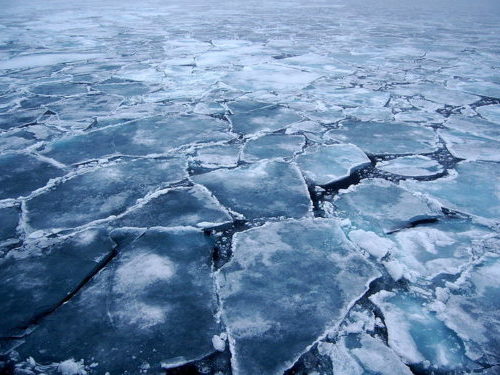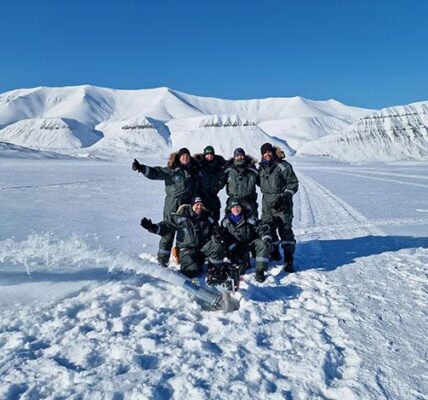This story includes details on the impacts of climate change that may be difficult for some readers. If you are feeling overwhelmed by this crisis situation here is a list of resources on how to cope with fears and feelings about the scope and pace of the climate crisis.
Sea-ice-free Arctic summers are now inevitable, researchers say, contradicting previous studies that suggested sharp emissions cuts could avoid fully losing Arctic ice cover in the coming decades.
“Unfortunately it has become too late to save Arctic summer sea ice,” said Professor Dirk Notz of the University of Hamburg, Germany, who was part of the study published in the journal Nature Communications.
“As scientists, we’ve been warning about the loss of Arctic summer sea ice for decades,” Notz added. “This is now the first major component of the Earth system that we are going to lose because of global warming. People didn’t listen to our warnings.”
He added: “This brings another warning bell that the kind of projections that we’ve made for other components of the Earth system will start unfolding in the decades to come.”
The Intergovernmental Panel on Climate Change (IPCC) previously reported that the Arctic was likely to be practically ice-free in September near mid-century under intermediate and high greenhouse gas emissions scenarios, but that there could still be ice year-round in low-emissions scenarios. The projections in its sixth assessment report were based on simulations created with a tool called Coupled Model Intercomparison Project Phase 6 (CMIP6), which used information generated by “runs” from around 100 distinct climate models to reveal how natural systems are likely to be affected by different levels of emissions.
These findings were considered to be more climate sensitive than those from the CMIP5 models used in prior IPCC reports, but they were still not entirely reliable for historical emissions scenarios.
Another study that examined CMIP6 Arctic sea ice simulations found the majority CMIP6 simulations lose most September sea ice for the first time before 2050—in all emissions scenarios.
The newest study tested these claims using an attribution analysis approach, which evaluates the quality of the observational record, the ability of the model to accurately simulate the effect of greenhouse gas emissions on Arctic ice, and the level of scientific understanding about the physical processes that affect Arctic ice and how it might be influenced by global warming.
“Many studies have projected when the Arctic would be seasonally ice-free, and all could be proven wrong given the non-linearities and variability inherent in the Arctic climate system,” said Axios. “One thing is for sure though, there are going to be surprises, many of them in a warmer, less ice-covered direction.”
The researchers in the latest study used three satellite observations from 1979 to 2019 to test the accuracy of CMIP6 projections for the time period and used the data to project future outcomes.
They tried to increase accuracy by measuring sea ice based on actual area covered, unlike previous attribution studies that used measurements from a grid that recorded cells with at least 15% sea-ice concentration. And though most studies have focused on ice melt in September, when the largest changes occur, the new study found that Arctic sea ice has been melting in all months and adjusted its measurements accordingly.
By extending projections to include the influence of greenhouse gas emissions throughout the year, the study showed that previous studies have under-represented the full effect of climate pollution on Arctic sea ice. The new findings suggest not only that the IPCC’s projection of a low emissions scenario was inaccurate, but also that ice-free Arctic summers will occur much sooner than the previous study estimated.
To be clear, “this doesn’t mean there would be zero ice on the water—icy patches are expected to remain in certain corners of the Arctic for some time to come,” reports The New York Times. What it means is that the amount of sea ice will dip below the one-million-square-kilometre threshold that scientists use, which is less than 15% of the seasonal minimum ice cover recorded in the Arctic in the late 1970s.
The new study also tested the influence of other drivers of sea ice melt and found that human-generated greenhouse gases were responsible for 90% of the melting, while natural drivers accounted for the rest. The unprecedented loss of sea ice will “affect human society and the ecosystem both within and outside the Arctic, through changing Arctic marine activities as well as further accelerating the Arctic warming and thereby altering Arctic carbon cycling.”
“These results emphasize the profound impacts of greenhouse gas emissions on the Arctic, and demonstrate the importance of planning for and adapting to a seasonally ice-free Arctic in the near future,” the researchers state.
in Arctic & Antarctica, Carbon Levels & Measurement, Heat & Temperature, Ice Loss & Sea Level Rise, International Agencies & Studies



